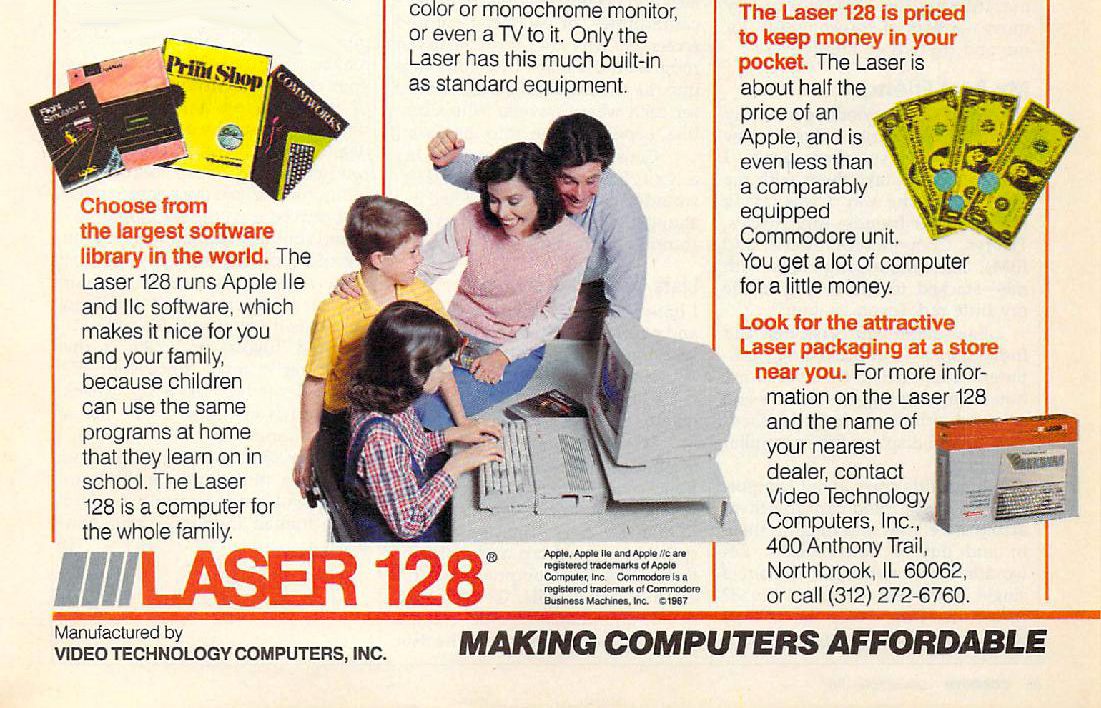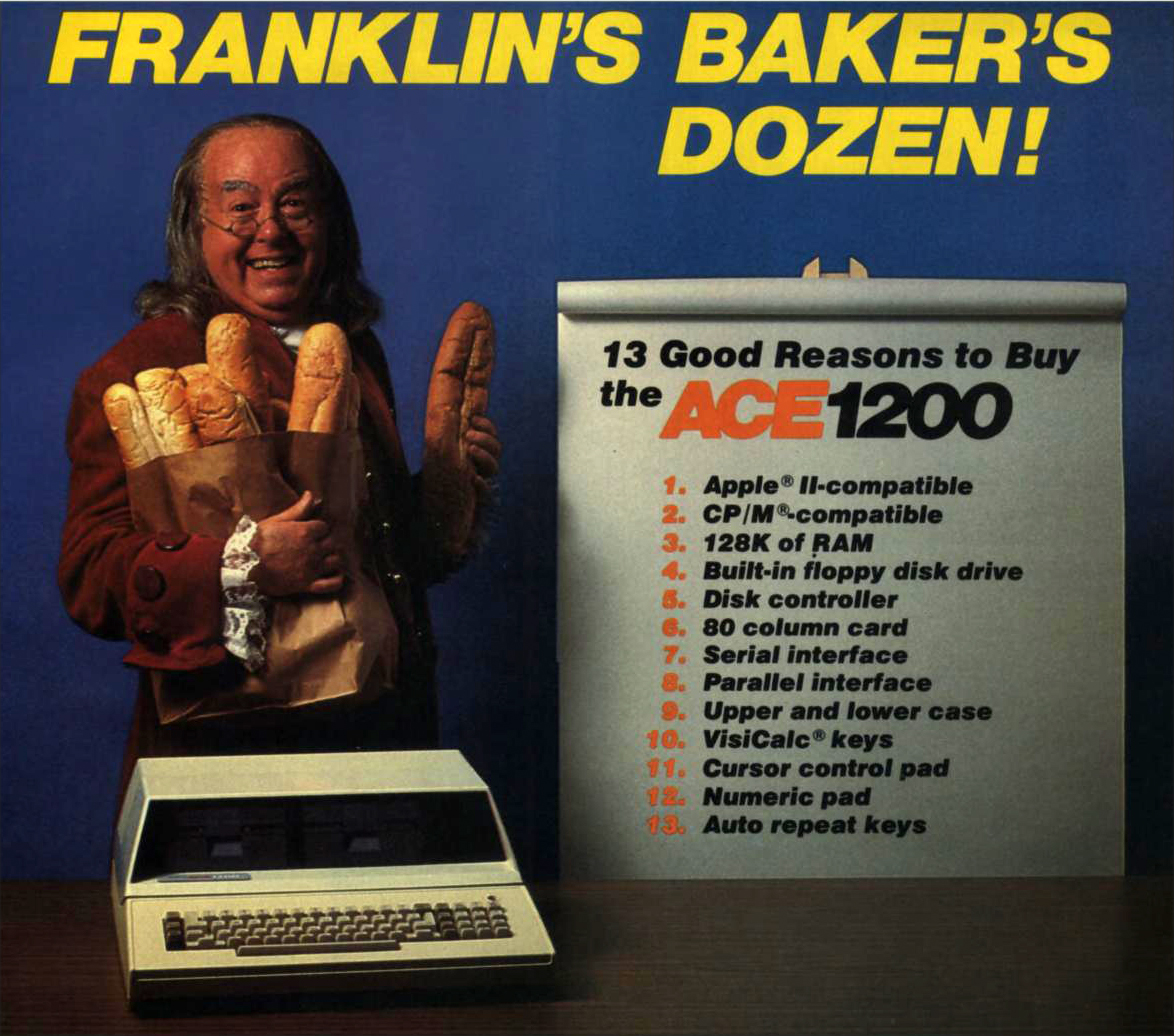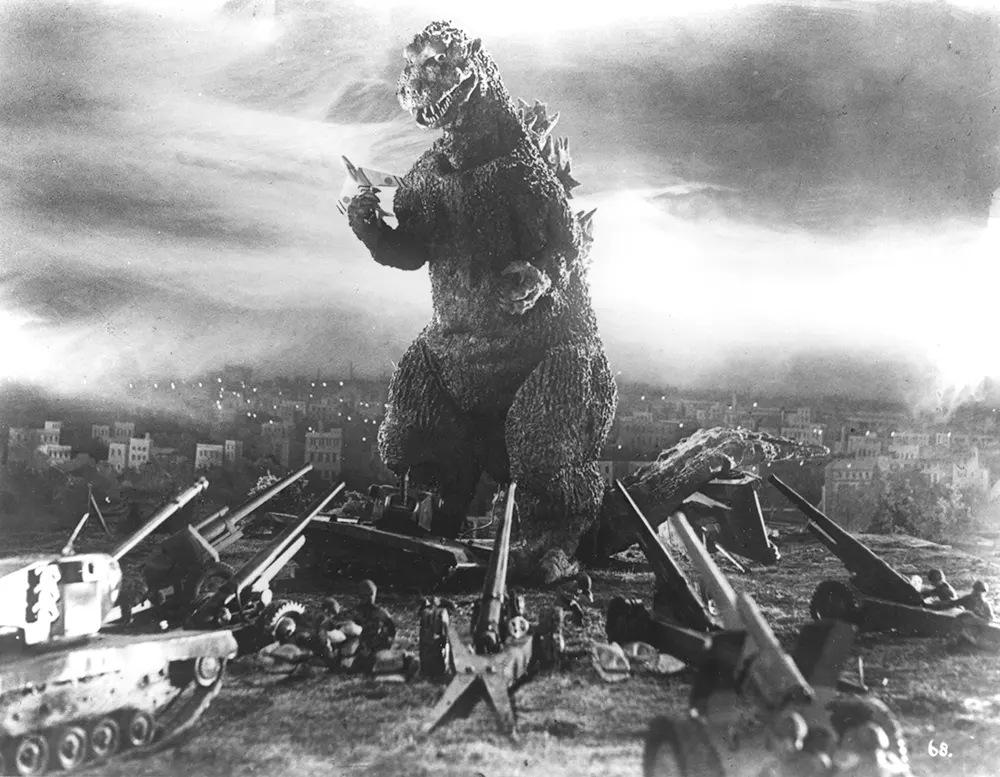
This photo collection of vintage ads gives a glimpse into how the computer industry developed in the early 1980s.
Magazines were rife with these types of ads emphasizing a few particular selling points such as the new computer tech being educational, would help with your homework, would bring the whole family together in joy and harmony, and that would help the kids succeed.
During this time technology developed to a point where manufacturers could place millions of transistors on a single circuit chip.
This was called monolithic integrated circuit technology. It also heralded the invention of the Intel 4004 chip which was the first microprocessor to become commercially available in 1971.
This invention led to the dawn of the personal computer industry. By the mid-70s, personal computers such as the Altair 8800 became available to the public in the form of kits and required assembly.

The magazine stated that “a desirable contemporary personal computer has 64 K of memory, about 500 K bytes of mass storage online, any old competently designed computer architecture, upper and lowercase video terminal, printer, and high-level languages”.
The author reported that when he needed to purchase such a computer quickly he did so at a local store for $6000 in cash, and cited it as an example of “what the state of the art is at present … as a mass-produced product”.
By early that year Radio Shack, Commodore, and Apple manufactured the vast majority of the one half-million microcomputers that existed.
As component prices continued to fall, many companies entered the computer business. This led to an explosion of low-cost machines known as home computers that sold millions of units before the market imploded in a price war in the early 1980s.

The innovative machine was bundled with about $1,500-2,000 worth of software, and the whole package sold for $1,899.
The first laptop computer also arrived in 1981, the Epson HX-20 (a.k.a. Geneva). The HX-20 was about 8.5″ by 11″ and maybe 1.5-2″ thick and used a microcassette to store data. It displayed 4 lines of 20 characters on an LCD screen above the keyboard.
Of course, the most significant event of 1981 for the personal computing industry was the introduction of the IBM PC on August 12.
This computer ran a 16-bit CPU on an 8-bit bus (the Intel 8088), had five expansion slots, included at least 16 KB of RAM, and had two full-height 5.25″ drive bays.

Time magazine called 1982 “The Year of the Computer” as the industry grew up. By 1983, the industry estimated that 10 million personal computers were in use in the United States alone.
Ever since IBM entered the market, the term PC has taken on a different meaning. Although it retains the original meaning of “personal computer”, the IBM architecture has so dominated the industry that it soon came to mean IBM-compatible computers to the exclusion of other machines.



“MusicSystem generates the sound of any musical instrument – real or imagined! Solo or sextet. Rock or classical. Laid-back or loud. At home, the concert hall, or the classroom. MusicSystem sets new standards for computer generated music… Drop by your Apple Dealer and ask to hear Mountain Music for yourself. Now only $395.00”. 1982.

“With a calculator, pencil and paper you can spend hours planning, projecting, writing, estimating, calculating, revising, erasing and recalculating as you work toward a decision. Or with Personal Software VisiCalc program and your Apple II you can explore many more options with a fraction of the time and effort you’ve spent before. ” 1980.

“The North Star Horizon computer can be found everywhere computers are used: business, engineering, home – even the classroom. Low cost, performance, reliability and software availability are the obvious reasons for Horizon’s popularity. But when a college bookstore orders our BASIC manuals, we know we have done the job from A to Z.” 1980.

“Let’s face it. We all have to make decisions. Decisions that can change our lives. Decisions that make us happy or unhappy. Decisions that could win us fame or fortune. Now, DecisionMaster can help you make the best decisions of your life. Use Bayesian theory to peer into the future… even if you’ve never heard of the Bayes’ Rule…. If you buy only one computer program this year, make it DecisionMaster. And when it speaks, listen.” (1980)

Creative Computing magazine. 1981.

“We’re Corona Data Systems and we’ve made Starfire, a Winchester disk just for Apple II. What’s in it for you? 5 million characters of storage. And that’s not all. You’ll get Corona’s Disk Partitioning which allows for up to 16 separate operating systems such as Apple DOS and Pascal, all sharing the same disk.” 1982.

“Magic Window transforms your Apple Computer into a sophisticated word processor unlike any other. Streamlined to meet all professional needs yet be easy to understand and operate. Magic Windo can be used by anyone in minutes. Simulating a standard typewriter, everyone has immediate rapport with the system as no special training is required….. Magic Window solves the Apple’s display problem without expensive hardware additions. Using your video screen as a “window” you view what you type from any position selected with a single keystroke….” 1982.

Creative Computing magazine. 1982.

“If you guessed that a Practical Peripherals Microbuffer printer buffer saves time, you’re right. For the way it works, this inexpensive product is the most practical addition to your microcomputer system ever. With Microbuffer, you don’t have to wait for your printer to finish before you resume using your computer. Data is received and stored at fast speeds, then released from Microbuffer’s memory to your printer. This is called buffering. The more you print, the more productive it makes your workflow.” 1983.

“If you’re tired of inflexible personal software, it’s time for SAVVY. SAVVY teaches your computer to adapt to you. It’s part hardware, part software, and part remarkable. It lets your computer see things as you see them. do things the way you like to do them. It even allows for those unavoidable entry errors that we all sometimes make. What’s the secret? SAVVY can recognize patterns (other software products can only recognize exact duplicates) and you can teach it to recognize your language. That means it will carry out your commands instead of flashing ‘error’ messages.” 1983.

Advanced Logic Systems (ALS) CP/M Card for Apple II.

Creative Computing magazine. 1983.

Creative Computing. 1985.

Creative Computing. 1985.

Kilobaud Microcomputing magazine. 1979.

Računar magazine. 1987.

Računari magazine. 1988.


BodyLink COMET (Computerized Muscle Exerciser and Trainer). 1986.

“The system is packaged in a totally shielded single case, housing two full-size dual-sided floppy disk drives, a full sized 12″ video monitor, the keyboard and the SDS-100 computer power. For the more technical features: 32K Random Access Memory, 1,025,024 Bytes of on line disk storage…”








(Photo credit: Pinterest / Flickr / Wikimedia Commons / Personal Computer History: 1975-1984 by Daniel Knight).

